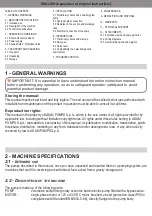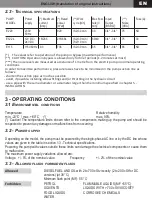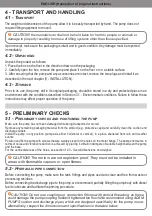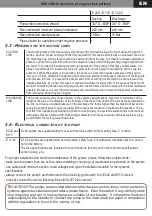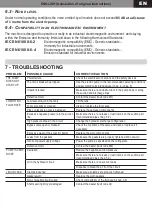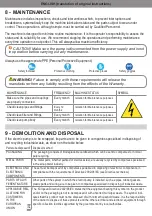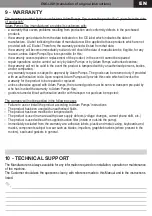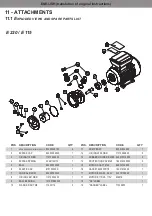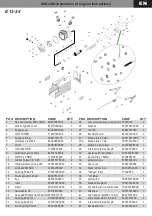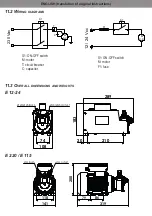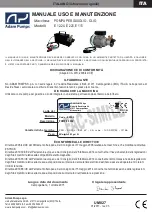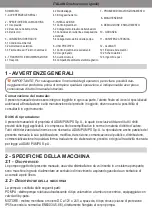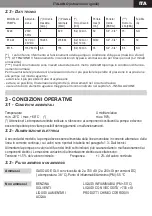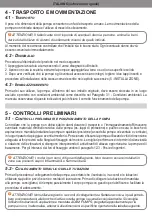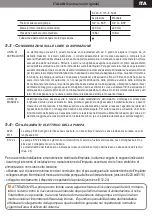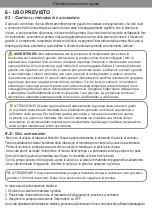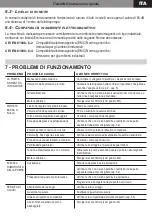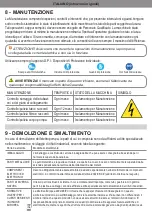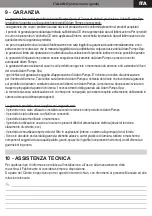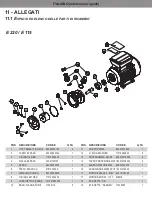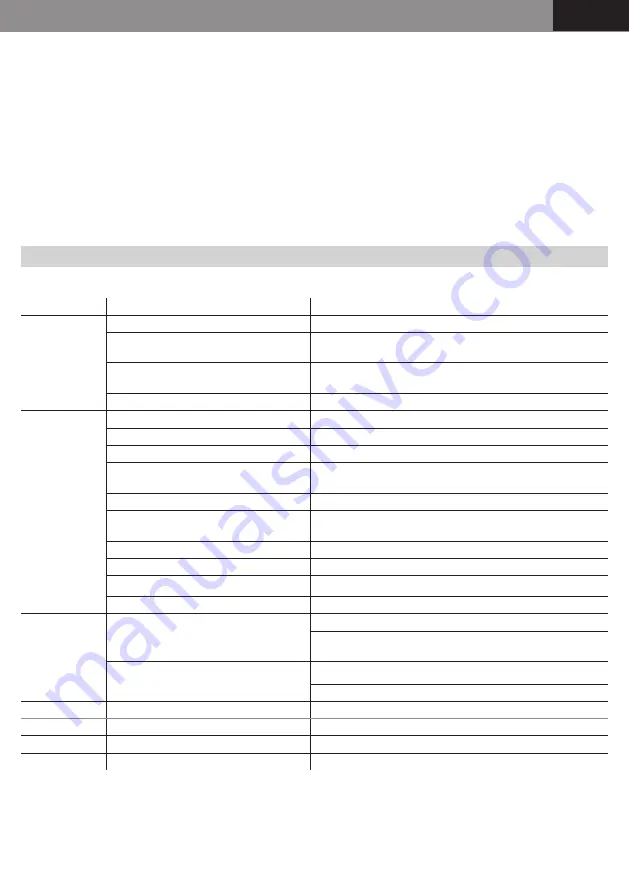
ENGLISH (translation of original instructions)
EN
6.3 - n
oIse
level
6.4 - c
ompatIbIlIty
In
an
electromagnetIc
envIronment
Under normal operating conditions the noise emitted by all models does not exceed
85 dB at a distance
of 1 metre from the electric pump.
The machine is designed to operate correctly in an industrial electromagnetic environment, and staying
within the Emission and Immunity limits laid down in the following Harmonised Standards:
IEC EN 61000-6-2
Electromagnetic compatibility (EMC) - Generic standards –
Immunity for industrial environments
IEC EN 61000-6-4
Electromagnetic compatibility (EMC) - Generic standards –
Emission standard for industrial environments
7 - TROUBLESHOOTING
PROBLEM
POSSIBLE CAUSE
CORRECTIVE ACTION
THE PUMP
DOES NOT
START UP
Power failure
Check the electrical connections and the safety devices
The circuit breaker has tripped
Use the electric pump in the recommended operating conditions
and according to its intended use (chap. 2 - chap. 5)
Impeller blocked
Make sure there are no obstructions in the pump body or along
the suction and discharge lines
Defective motor
Contact the dealer (fault code M1)
LOW OR NO
FLOW RATE
Low level of liquid in the tank
Fill the tank
Foot valve dirty or clogged
Clean or replace the foot valve
Pipe or dispensing nozzle damaged
Replace the damaged components
Excessive negative pressure to the suction
line
Make sure there are no leaks or restrictions on the suction part
(recommended pipes chap. 5.2)
High pressure drops in the circuit
Change the hydraulic discharge configuration
Bypass valve open or blocked
Check the condition of the valve and clean or replace it if
necessary
Excessive wear of the eccentric barrel
Replace the worn components
Leaks from the gaskets
Make sure the gaskets are properly tightened and not worn
Incorrect power supply voltage
Power the pump as specified on the rating plate
Defective motor
Contact the dealer (fault code M2)
PUMP IS VERY
NOISY
Cavitation
Reduce the negative suction pressure
Make sure there are no leaks or restrictions on the suction part
(recommended pipes chap. 5.2)
Air in the hydraulic circuit
Make sure there are no suction leaks
Dispense to bleed the air from the circuit
LIQUID LEAK
Clamps loosened
Make sure all clamps are properly tightened
Gaskets worn
Replace the worn gaskets
Non-compatible liquids used
Check compatibility of the fluid used (chap. 3.3)
Shaft seal ring dirty or damaged
Contact the dealer (fault code A1)


